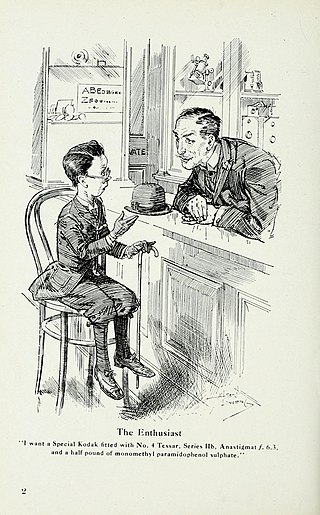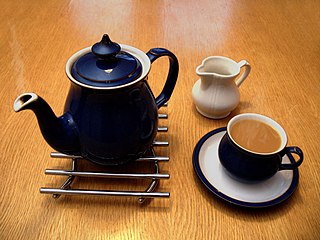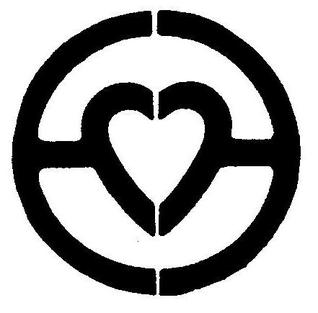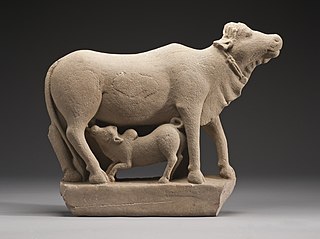
A consumer is a person or a group who intends to order, or use purchased goods, products, or services primarily for personal, social, family, household and similar needs, who is not directly related to entrepreneurial or business activities. The term most commonly refers to a person who purchases goods and services for personal use.

A drink or beverage is a liquid intended for human consumption. In addition to their basic function of satisfying thirst, drinks play important roles in human culture. Common types of drinks include plain drinking water, milk, juice, smoothies and soft drinks. Traditionally warm beverages include coffee, tea, and hot chocolate. Caffeinated drinks that contain the stimulant caffeine have a long history.

Milk is a white liquid food produced by the mammary glands of mammals. It is the primary source of nutrition for young mammals before they are able to digest solid food. Immune factors and immune-modulating components in milk contribute to milk immunity. Early-lactation milk, which is called colostrum, contains antibodies that strengthen the immune system and thus reduce the risk of many diseases. Milk contains many nutrients, including protein and lactose.

Stout is a dark, top-fermented beer style which includes dry stout, oatmeal stout, milk stout and imperial stout.

Tea is an aromatic beverage prepared by pouring hot or boiling water over cured or fresh leaves of Camellia sinensis, an evergreen shrub native to East Asia which probably originated in the borderlands of southwestern China and northern Myanmar. Tea is also made, but rarely, from the leaves of Camellia taliensis. After plain water, tea is the most widely consumed drink in the world. There are many different types of tea; some have a cooling, slightly bitter, and astringent flavour, while others have profiles that include sweet, nutty, floral, or grassy notes. Tea has a stimulating effect in humans primarily due to its caffeine content.

Yogurt is a food produced by bacterial fermentation of milk. The bacteria used to make yogurt are known as yogurt cultures. Fermentation of sugars in the milk by these bacteria produces lactic acid, which acts on milk protein to give yogurt its texture and characteristic tart flavor. Cow's milk is the milk most commonly used to make yogurt. Milk from water buffalo, goats, ewes, mares, camels, and yaks are also used to produce yogurt. The milk used may be homogenized or not. It may be pasteurized or raw. Each type of milk produces substantially different results.
Advertising slogans are short phrases used in advertising campaigns to generate publicity and unify a company's marketing strategy. The phrases may be used to attract attention to a distinctive product feature or reinforce a company's brand.

Yakult is a Japanese sweetened probiotic milk beverage fermented with the bacteria strain Lacticaseibacillus casei Shirota. It is sold by Yakult Honsha, based in Tokyo. It is distributed through convenience stores and supermarkets in single-serving containers of 65 mL or 100 mL, often in single-row packs of five or ten. The name "Yakult" was coined from jahurto, an Esperanto word meaning "yogurt".

Got Milk? is an American advertising campaign on television and YouTube encouraging the consumption of milk and dairy products. Created by the advertising agency Goodby Silverstein & Partners for the California Milk Processor Board in 1993, it was later licensed for use by milk processors and dairy farmers. It was launched in 1993 by the "Aaron Burr" television commercial, directed by Michael Bay. The national campaign, run by MilkPEP began to add the "got milk?" logo to its "Milk Mustache" ads in 1995.

Milk chocolate is a form of solid chocolate containing cocoa, sugar and milk. It is the most consumed type of chocolate, and is used in a wide diversity of bars, tablets and other confectionery products. Milk chocolate contains smaller amounts of cocoa solids than do dark chocolates, and contains milk solids. While its taste has been key to its popularity, milk chocolate was historically promoted as a healthy food, particularly for children.

Eggnog, historically also known as a milk punch or an egg milk punch when alcoholic beverages are added, is a rich, chilled, sweetened, dairy-based beverage. It is traditionally made with milk, cream, sugar, egg yolks, and whipped egg whites. A distilled spirit such as brandy, rum, whiskey or bourbon is often a key ingredient.

Milky Way is a brand of chocolate-covered confectionery bar manufactured and marketed by Mars, Incorporated. There are two varieties: the US Milky Way bar, which is sold as the Mars bar worldwide, including Canada; and the global Milky Way bar, which is sold as the 3 Musketeers in the US and Canada.

The Beecham Group plc was a British pharmaceutical company. It was once a constituent of the FTSE 100 Index. Founded by Thomas Beecham who opened the first factory in St Helens, Lancashire in 1859, Beecham focused on marketing the business by advertising in newspapers and using a network of wholesale agents in northern England and in London, rapidly building up the business. In August 1859 he created the slogan for Beecham's Pills: "Worth a guinea a box", considered to be the world's first advertising slogan, which helped the business become a global brand.

The Milk Marketing Board was a producer-run product marketing board, established by the Agricultural Marketing Act 1933, to control milk production and distribution in the United Kingdom. It functioned as buyer of last resort in the milk market in Britain, thereby guaranteeing a minimum price for milk producers. It also participated in the development of milk products, introducing Lymeswold cheese. It was based at Thames Ditton in Surrey.

An alcoholic beverage is a drink that contains ethanol, a type of alcohol and is produced by fermentation of grains, fruits, or other sources of sugar. The consumption of alcoholic drinks, often referred to as "drinking", plays an important social role in many cultures. Alcoholic drinks are typically divided into three classes—beers, wines, and spirits—and typically their alcohol content is between 3% and 50%.

Guinness is an Irish dry stout that originated in the brewery of Arthur Guinness at St. James's Gate, Dublin, Ireland, in 1759. It is now owned by the British-based multinational alcoholic beverage maker Diageo. It is one of the most successful alcohol brands worldwide, brewed in almost 50 countries, and available in over 120. Sales in 2011 amounted to 850,000,000 liters. In spite of declining consumption since 2001, it is the best-selling alcoholic drink in Ireland where Guinness & Co. Brewery makes almost €2 billion worth of beer annually.
The Dairy Council is a British organisation founded in 1920 to promote the widespread consumption of milk in the UK, and advocate its health benefits.

Dairy plays a significant part in numerous aspects of Indian society, including cuisine, religion, culture, and the economy.
"Milk's gotta lotta bottle" was an advertising slogan used by the British Milk Marketing Board (MMB) in the early 1980s. It followed the "drinka pinta milka day" slogan used by the MMB from 1959. The new slogan was an attempt to halt declining sales particularly among young people. The slogan was used in television and radio advertisements and on various items of merchandise from January 1982. It was judged as successful but was supplanted by "Get Fresh, Get Bottle" by the middle of the decade.

















